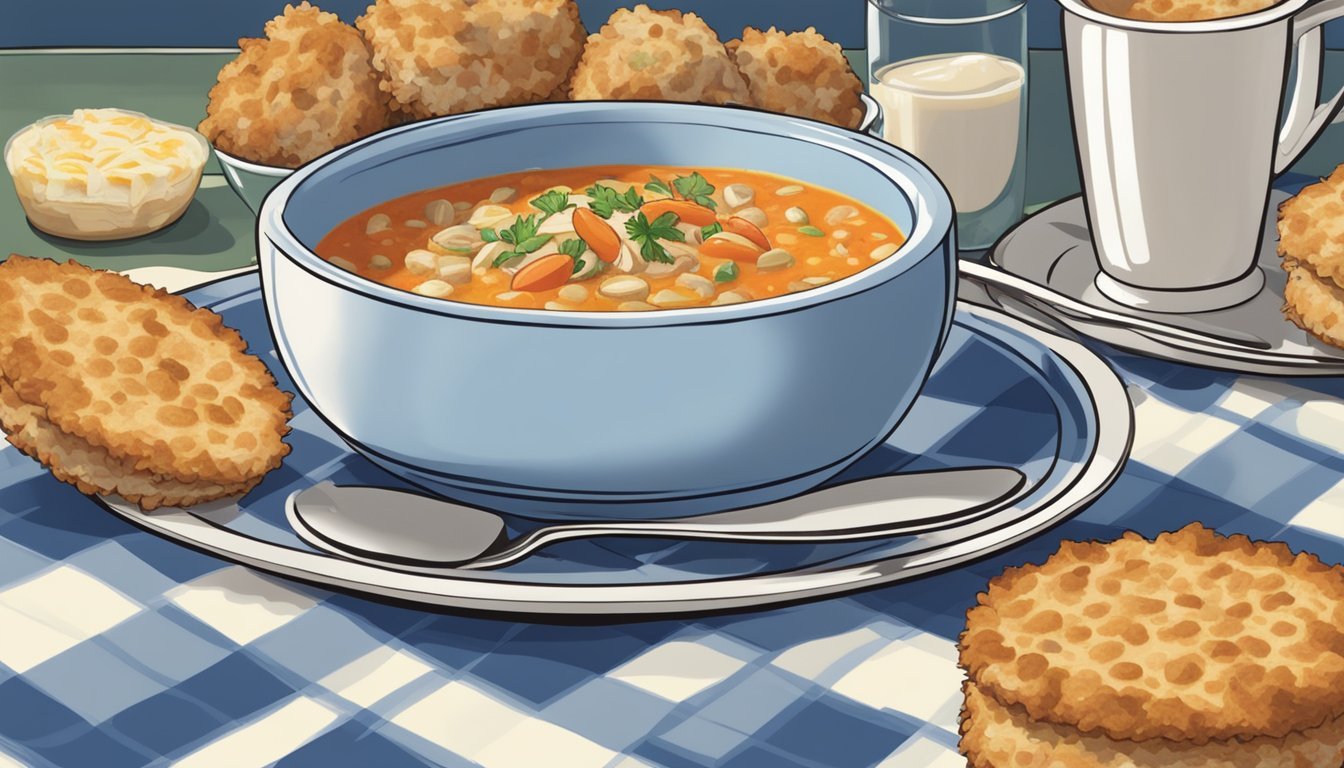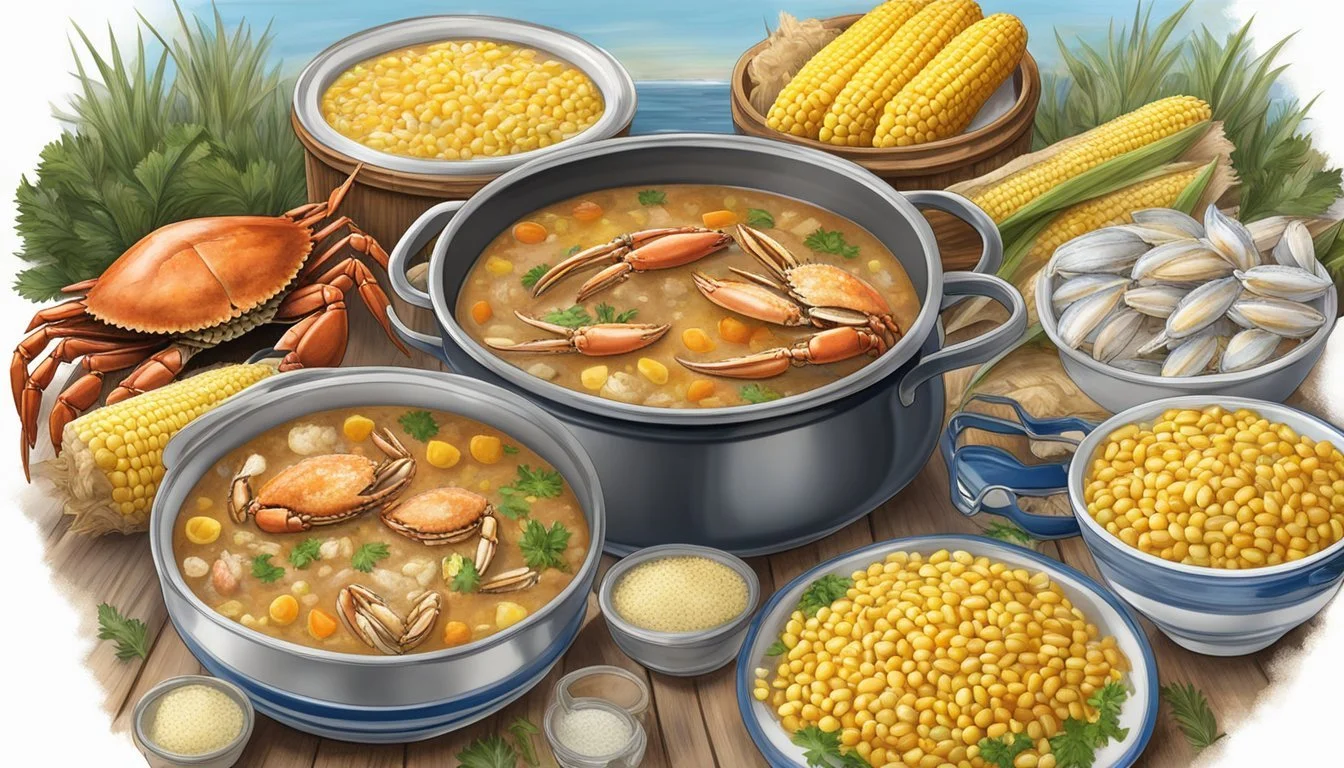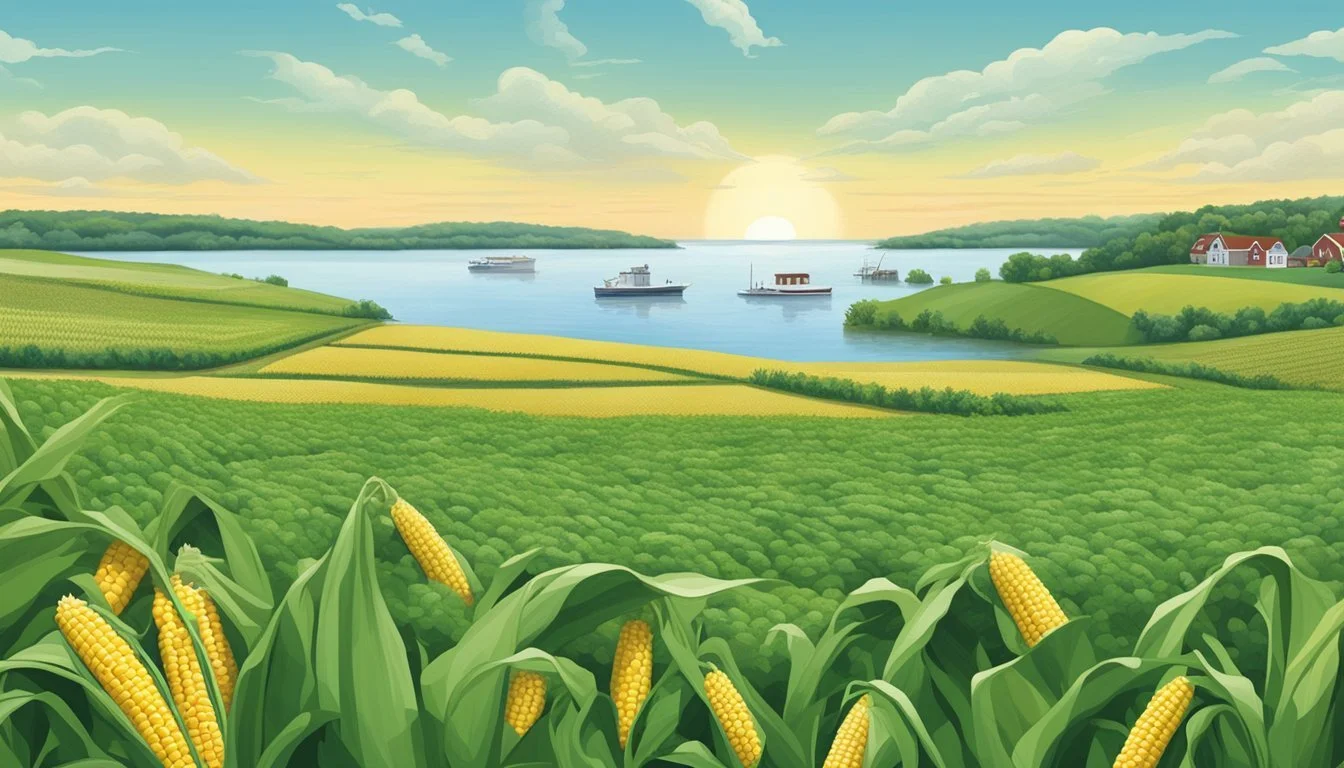What Food is Maryland Known for?
A Guide to Iconic State Dishes
Maryland, an East Coast state in the United States, boasts a vibrant food scene renowned for its distinctive culinary offerings that reflect the region's cultural history and maritime heritage. Central to Maryland cuisine is the abundant supply of seafood from the Chesapeake Bay, which shapes many of the state's most celebrated dishes. It isn't just about the variety; the way Marylanders integrate the rich flavors and fresh ingredients speaks volumes about the state's culinary traditions.
The state's signature food item is undoubtedly the steamed crab (What wine goes well with crab?), often seasoned with the local favorite Old Bay seasoning. (how long does old bay seasoning last?) This iconic dish not only embodies the essence of Maryland food but has also become a symbol of the state's culinary identity. Beyond the illustrious crustaceans, Maryland food includes a wide array of other specialties such as crab cakes (What wine goes well with crab cakes?), Smith Island Cake, and Old Bay Seasoning itself, which local palates favor in a variety of dishes. These key elements are woven into every aspect of Maryland's food narrative, offering a taste of the state's historic and contemporary flavors.
Maryland's food repertoire extends to include dishes like Rockfish, Maryland Crab Soup, and Berger Cookies, each adding a unique layer to the state's delectable cuisine. While seafood (What wine goes well with seafood?) is a cornerstone, the culinary landscape is enriched with sweet and savory treats that cater to an array of preferences. Food enthusiasts exploring Maryland are invited to experience a canvas of flavors that paint a picture of the state's rich, gastronomic tapestry.
Historical Backdrop of Maryland Cuisine
Maryland's culinary heritage has deep roots in the rich tapestry of American history. Situated along the Chesapeake Bay, the state's cuisine has been shaped by an abundance of natural resources, particularly seafood. The Bay has been central to Maryland's foodways, with blue crabs, oysters (What wine goes well with oysters?), and rockfish featuring prominently in traditional dishes.
Old Bay seasoning, a unique blend of spices and herbs, is a hallmark of Maryland's culinary identity. Originating in the 1940s, it was developed by a German immigrant and quickly became synonymous with Maryland seafood, especially steamed blue crabs.
The use of spices and herbs in Maryland cuisine reflects the historical trade routes and colonial influences. Early settlers incorporated these elements into their cooking, marrying local ingredients with a variety of flavors to create dishes that have stood the test of time.
Notable Maryland Seafood Importance Blue Crab A cultural icon and a staple in Maryland cuisine. Chesapeake Bay Oysters Harvested for generations, they're a traditional favorite. Rockfish Also known as striped bass, a sought-after catch in Maryland waters.
Historically, Maryland's food scene has also been enriched by its agriculture. Farming has provided a steady supply of fresh produce, dairy, and meats, which complement the seafood-centric diet. This fusion of land and sea creates a diverse palate that ranges from hearty stews and soups to delicate pastries and desserts.
Seafood Staples of Maryland
Maryland's culinary landscape is anchored in its abundant aquatic offerings from the Chesapeake Bay and the Atlantic Ocean. The region's hallmark is undoubtedly the blue crab, often served as steamed crabs seasoned liberally with Old Bay, a distinct blend of herbs and spices that's become synonymous with Maryland seafood.
Maryland crab cakes stand as a testament to the state's culinary prowess, incorporating lump crab meat into a flavorful patty that's broiled or fried to golden perfection. These savory cakes pair exquisitely with a side of apple cider vinegar or tartar sauce to enhance their rich taste.
Another iconic dish is Maryland crab soup, a hearty bowl filled with tender crab meat, a medley of vegetables, and a vibrant tomato base, often spiced to preference with a dash of Old Bay or Chesapeake Bay crab seasoning.
Seafood Delicacy Description Steamed Blue Crabs Fresh blue crabs steamed in a mixture of beer, spices, and herbs. Often enjoyed with melted butter. Maryland Crab Cakes Lump crab meat mixed with binders and seasonings, shaped into patties and broiled or fried. Maryland Crab Soup A tomato-based soup with crab meat, vegetables, and typically seasoned with Old Bay. Chesapeake Bay Oysters Filter feeders known to improve water quality, these oysters are savored raw or cooked, appreciated for their clean, slightly salty taste. Rockfish (Striped Bass) The state fish, often caught in Chesapeake Bay's waters, is celebrated for its mild, sweet flavor and versatility in various seafood dishes. (What wine goes well with seafood dishes?)
The Eastern Shore's waters offer fertile fishing grounds contributing significantly to the fishing industry. Maryland's dedication to seafood extends to the careful preparation of each dish, ensuring a true taste of the bay in every bite.
Famous Maryland Dishes and Where to Find Them
Maryland's cuisine offers a rich tapestry of flavors, each with a story rooted in the state's history and culture. From the iconic Smith Island Cake to seasoned snaps of Old Bay, these dishes are treasures waiting to be discovered. Here's where to explore the culinary landmarks of Maryland.
Smith Island Cake
This official dessert of Maryland is a marvel of yellow cake with layers bonded by chocolate fudge. Born on Smith Island, its sweetness is irresistible to anyone with a sweet tooth. Find it at bakeries across the Chesapeake region.
Chesapeake Bay Blue Crabs
A classic image of Maryland is the steamed blue crab seasoned with Old Bay. Head to the shores of the Chesapeake Bay to indulge in this quintessential seafood experience.
Baltimore's Signature Crab Cakes
Made with jumbo lump crab meat, Baltimore's crab cakes are a careful blend of breadcrumbs, egg, mayo, and a touch of Old Bay seasoning. Crab cake aficionados can find these at seafood restaurants throughout Baltimore.
Old Bay Seasoned Snacks
Maryland's love affair with Old Bay doesn't end with seafood; chips by local brands like Utz and Herr's get a zesty twist with crab potato chips. They are easily found in local stores.
Savory Pit Beef and Sandwiches
Pit beef is Maryland's answer to barbecue; slow-cooked over an open flame, it’s a symphony of aroma with onions and horseradish. Seek out pit beef stands dotting the Baltimore landscape for an authentic taste.
Unique Maryland Sweets and Treats
Berger cookies dipped in chocolate fudge frosting and Fisher's Popcorn are must-tries. These sweets are often linked to the bustling Ocean City boardwalk along with the famed Thrashers French Fries.
Ocean City's Boardwalk Delights
Ocean City's boardwalk is a haven for indulgent fare, from delectable Fisher's Popcorn to the salty goodness of Thrashers French Fries. Don’t miss out on these iconic bites.
Regional Specialties and Lesser-Known Delicacies
Beyond the well-known gems, Maryland boasts unique dishes like stuffed ham and coddies - a fish cake delight. Lake trout, despite the name, is a fried fish worth seeking out for an authentic Maryland meal.
Local Beverages and Brews
From Natty Boh (National Bohemian Beer) to the refreshing Orange Crush cocktail, Maryland's beverage game is strong. Local bars and taverns are the best spots to savor these traditional drinks.
Condiments and Seasoning Blends
Old Bay Seasoning, with its distinct combination of celery salt (how long does celery salt last?), paprika, and other spices, is a Maryland staple. Sprinkle it over seafood or mix it into condiments for that authentic Chesapeake Bay crab seasoning touch.
Maryland's Food-Related Events and Festivals
Food festivals are a great way to dive into Maryland's culinary scene, from the Seafood Festival to the unique Crab Soup Cook-off. These events celebrate the flavors that make the state a foodie's delight.
Cultural Significance of Maryland's Cuisine
Maryland's cuisine is a tapestry of flavors that extend far beyond its famous blue crabs and Old Bay seasoning. It is a rich mosaic that reflects the state's cultural heritage and is deeply intertwined with local traditions.
Dining Experience: The dining experience in Maryland is a festive fusion of community and culinary artistry. From family-owned seafood shacks to high-end waterfront restaurants, patrons enjoy dishes that have been savored for generations, fostering a sense of belonging and state pride.
Cultural Heritage: Maryland's culinary scene encapsulates its history, from its beginnings as the "Free State" to its moniker, the "Old Line State." The state's position by the Chesapeake Bay has traditionally shaped its diet, with seafood being a cornerstone. Local festivals and cook-offs showcase this heritage, passing down recipes and techniques through the ages.
Local Traditions: Feasts often feature steamed crabs, crab cakes, and Smith Island Cake, linking present tastes to past practices. The preparation and enjoyment of these meals reinforce community bonds and celebrate Maryland's unique local customs.
In the kitchens of Maryland, every dish has a story to tell, from the humble coddies and savory pit beef to the decadent layers of the Smith Island Cake. It's a narrative laced with the struggle, triumph, and innovation of the people, with each bite inviting discovery of the Free State's soul.
Agriculture and Local Produce
Maryland's agricultural sector exhibits remarkable diversity due to its unique geography, which stretches from the Atlantic Ocean to the Appalachian Mountains. This variety in landscapes supports the growth of a wide range of local produce, making the state a significant player in both crop cultivation and animal husbandry.
Key Produce and Commodities:
Farmers across the state leverage the region’s fertile land to cultivate a variety of crops:
Poultry: Leading the industry, particularly broiler chickens.
Crops: Corn and soybeans (how long do soybeans last?) are prominent grains grown here.
Vegetables: An assortment of vegetables thrives due to the state's rich soil and favorable climate.
Dairy: Milk and dairy products are vital, with Maryland home to numerous dairy farms.
Local ingredients often include fresh-picked fruits and vegetables, and there's a particular fondness for Maryland’s apples, which are also used to craft apple cider vinegar—a staple in many kitchens for its versatile use in recipes and potential health benefits.
Sustainable Practices:
The state’s farmers are not just committed to producing a wide range of agricultural goods; they also focus on sustainability to protect their most precious resource—the land. This ensures the continued availability of high-quality, local ingredients that contribute to Maryland’s culinary identity.
Italics, bold, lists, and tables are key elements to format different pieces of content in order to make them stand out or clarify the structure of the information. For example:
Local Produce Availability:
Spring: Sweet corn, strawberries
Summer: Tomatoes, peaches
Fall: Apples, pumpkins
Winter: Indoor-harvested crops, such as leafy greens
By prioritizing agriculture and the use of local ingredients, Maryland supports a robust food ecosystem that respects the environment and provides consumers with fresh, nutritious options year-round.
Key Influences and Culinary Evolution
The culinary landscape of Maryland is a tapestry woven from a diverse range of cultural threads. The state's gastronomy has been shaped significantly by Native American, European, and African influences. Each group contributed distinct flavors and techniques to what has become a unique Maryland cuisine.
Native American Influence
The indigenous peoples initially populated the region, introducing the cultivation of corn, beans, and squash. Their knowledge of the land and seasonal foods laid the groundwork for the state's agricultural practices.
European Settlers
British colonists later infused their tastes for porridges, puddings, and pies. They adapted these recipes using local ingredients, such as peaches and apples, which grew abundantly in Maryland's favorable climate.
African Heritage
Enslaved Africans and their descendants brought profound depth to Maryland's culinary identity. They introduced bold spices and techniques, particularly evident in the preparation of seafood.
Immigration and Global Cuisine
Migration trends continued to introduce new culinary concepts, further diversifying Maryland's food scene. The global cuisine influence is a testament to the state’s ongoing evolution and openness to international flavors.
Key Ingredient Cultural Significance Blue Crab Synonymous with Maryland's identity Corn Staple crop from Native Americans Spices African influence on seasoning
Maryland's approach to food is indeed a mirror reflecting its historical tapestry of cultural diversity. The state's culinary evolution is ongoing, embracing new influences while cherishing its traditional roots.
Future Trends in Maryland's Culinary Scene
Maryland's food scene continues to evolve with an emphasis on sustainable eating and locally sourced ingredients. Chefs across the state are increasingly innovating dishes that reflect a commitment to environmental stewardship. It's anticipated that more restaurants will highlight seasonal produce, supporting local farmers and reducing carbon footprints.
Food innovation looks to play a significant role, with new trends continually emerging. One example is the adaptation of plant-based alternatives like oat milk (how long does oat milk last?), which has seen a rise in popularity. These alternatives offer sustainability benefits and cater to the growing demand for dairy-free options.
In terms of culinary trends, Maryland has seen certain foods gain recent acclaim:
Tres leches cake has gained momentum, suggesting a wider embrace of multicultural cuisine.
The use of Tajín, a seasoning blend, indicates a trend towards bolder flavors.
The growing popularity of Hazy IPAs supports the trend of craft brewing and locally-produced beverages.
Notably, birria tacos have made a significant impact, pointing towards an interest in interactive and flavorful dining experiences.
The future of Maryland's food scene seems poised to balance between innovation and tradition, with sustainable practices influencing how food is grown, prepared, and consumed.
Conclusion
Maryland's culinary scene offers a rich tapestry reflective of its geographical gifts and cultural heritage. The state is renowned for its seafood, particularly steamed blue crabs, harvested from the bountiful Chesapeake Bay. This delicacy not only serves as a cornerstone of Maryland cuisine but also supports local fisheries, providing economic opportunities within the state.
Beyond seafood, the food landscape incorporates diverse dishes such as pit-beef sandwiches and Berger Cookies, a testament to Maryland's culinary versatility. While the state excels in these traditional offerings, staying relevant in the ever-evolving culinary world of the United States presents challenges. Maryland cuisine must balance maintaining its classic dishes with innovating to attract new palates.
In summary, the food of Maryland encapsulates a unique blend of tradition and potential. Marylanders take pride in their local eats, which continue to delight residents and visitors alike. The state's commitment to its culinary roots while facing the future creates an enduring food heritage.
Maryland Culinary Staples Economic Role Challenges & Opportunities Steamed Blue Crabs Supports local fisheries Balancing tradition with innovation Pit-Beef Sandwiches Promotes diverse cuisine Attracting a broader audience Berger Cookies Adds sweetness to variety Integrating new flavors while honoring classics
The experience of Maryland’s food culture thus presents a dynamic chapter in the broader narrative of American cuisine.








